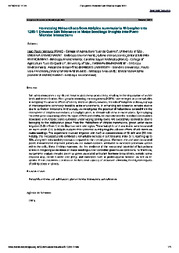Harnessing haloarchaea from atriplex nummularia rhizosphere to enhance salt tolerance in maize seedlings: insights into plant-microbe interactions.
Harnessing haloarchaea from atriplex nummularia rhizosphere to enhance salt tolerance in maize seedlings: insights into plant-microbe interactions.
Author(s): VENTURA, J. P.; LACERDA JÚNIOR, G. V.; NISHISAKA, C. S.; BISSON-FILHO, A.; FERNANDES-JÚNIOR, P. I.; MELO, I. S. de
Summary: Resumo: Soil salinization poses a significant threat to global crop productivity, resulting in the degradation of arable lands and desertification. Plant growth-promoting microorganisms (PGPM) have emerged as potential allies in mitigating the adverse effects of salinity stress on plants. However, the role of halophilic archaea, a group of microorganisms commonly found in saline environments, in enhancing salt tolerance remains elusive due to cultivation limitations. In this study, we investigated the potential of haloarchaea isolated from the rhizosphere of Atriplex nummularia, a halophytic plant, to alleviate salt stress in maize plants.
Publication year: 2023
Types of publication: Abstract in annals or event proceedings
Unit: Embrapa Environment
Observation
Some of Embrapa's publications are published as ePub files. To read them, use or download one of the following free software options to your computer or mobile device. Android: Google Play Books; IOS: iBooks; Windows and Linux: Calibre.
Access other publications
Access the Agricultural Research Database (BDPA) to consult Embrapa's full library collection and records.
Visit Embrapa Bookstore to purchase books and other publications sold by Embrapa.

